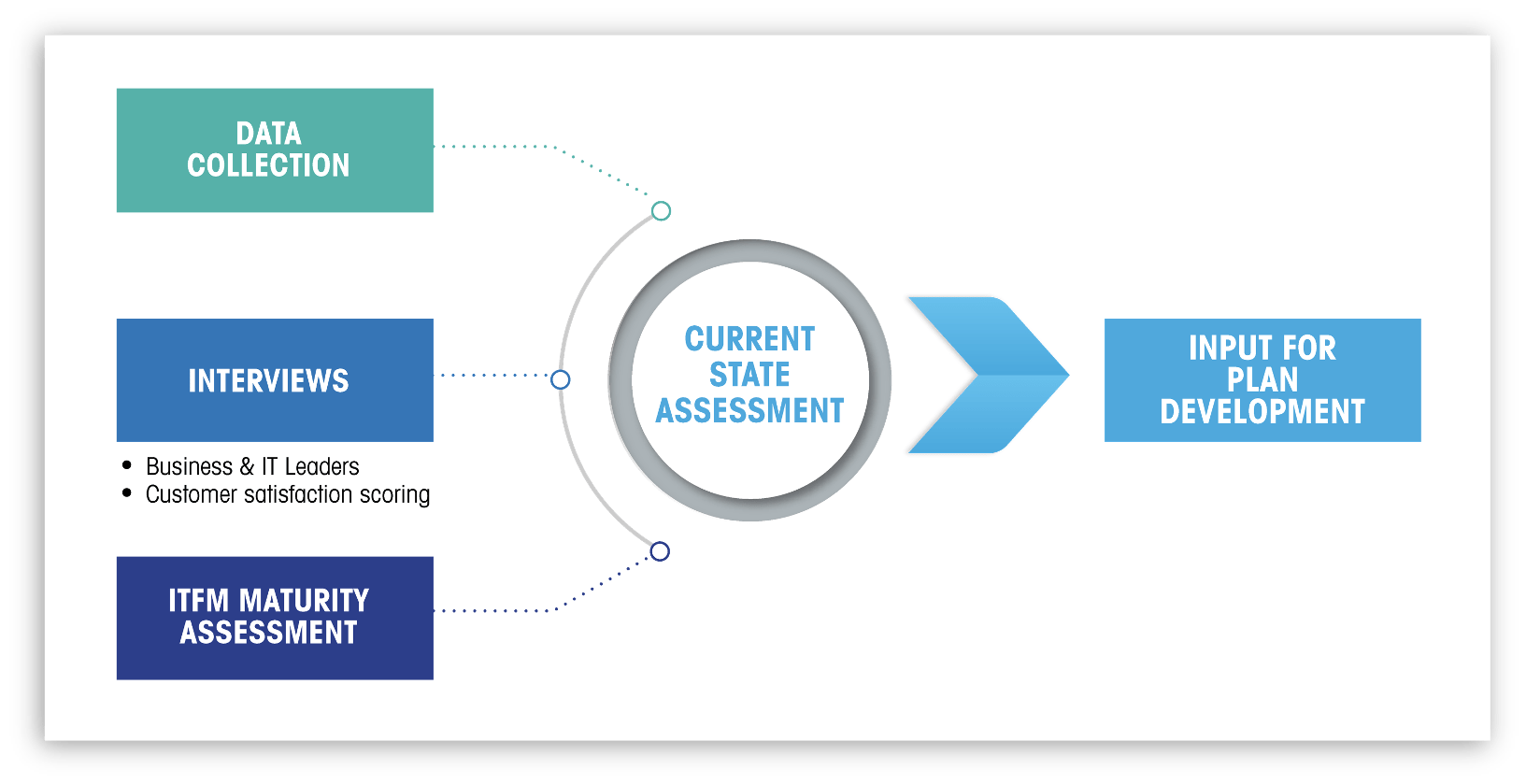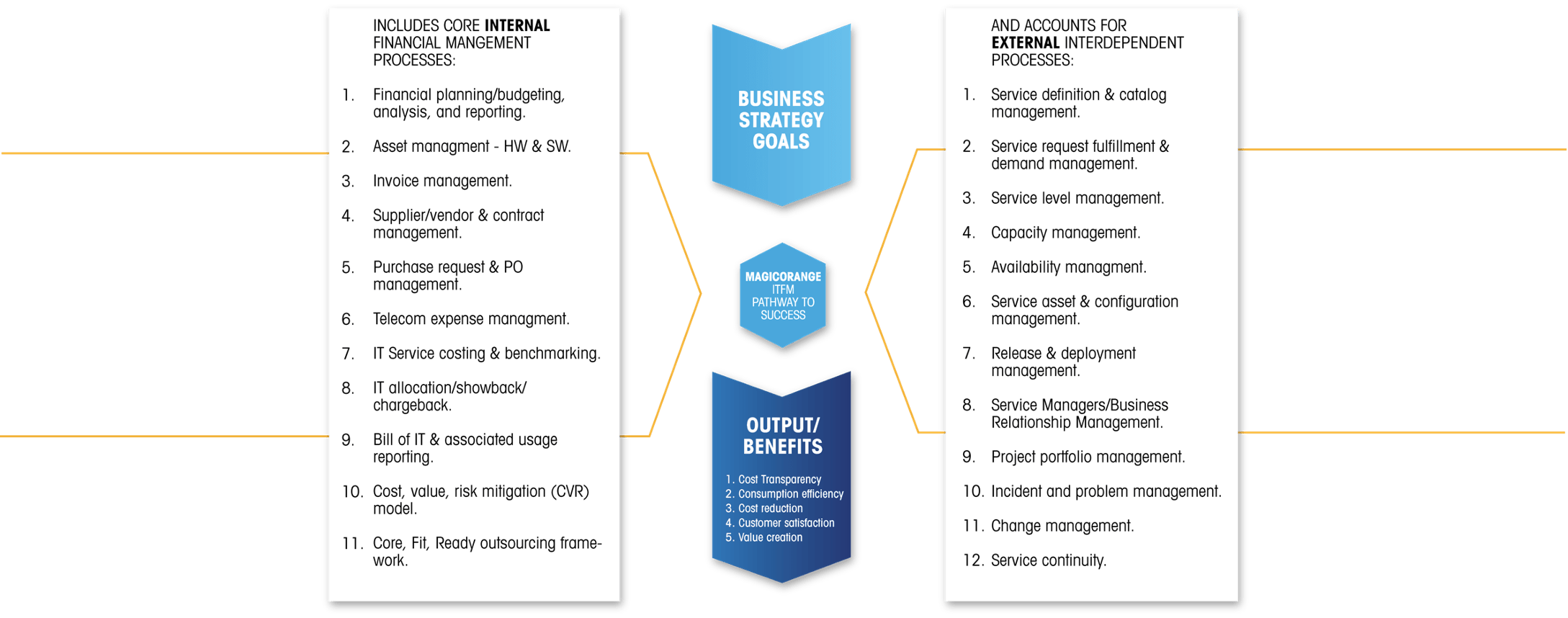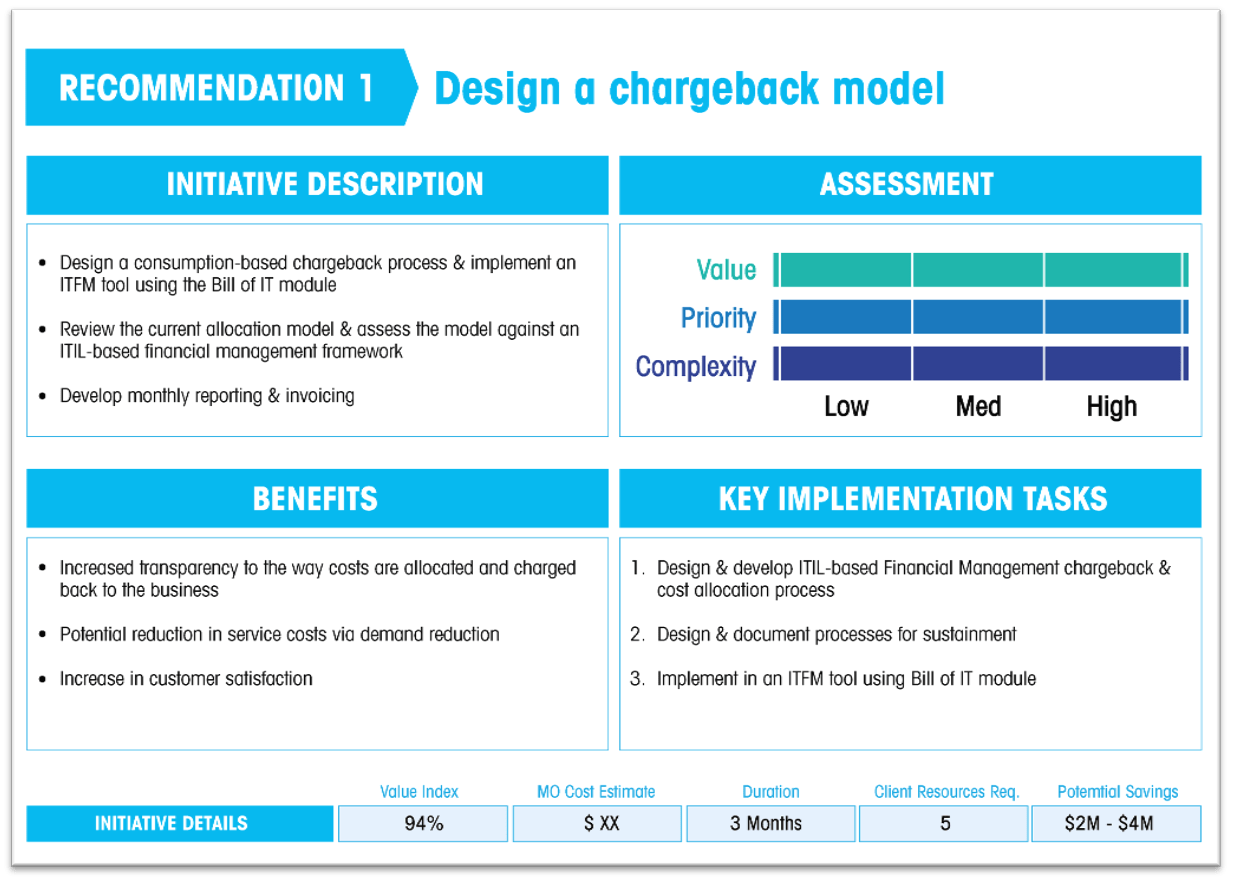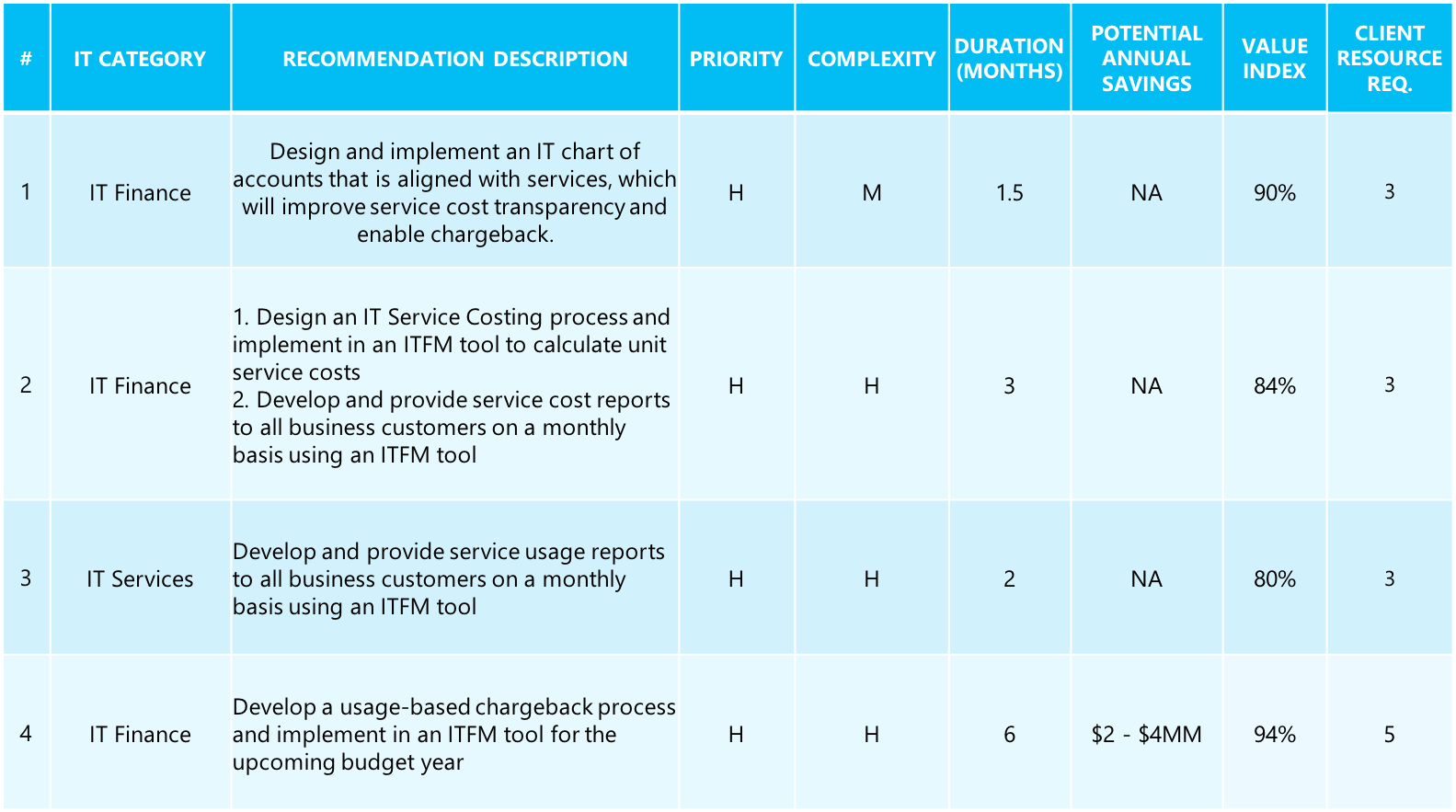- Review the IT strategic plan or current and future goals / objectives to determine how it links to the business strategy
- Revise as needed to include the creation of a strategic plan and initiatives for the coming year if none exist
- Data readiness – do you have IT service consumption data and what’s the quality level of that data?
- How is it generated, does it have BU details that would support chargeback, and is it mapped to services?
- High level data assessment only to determine number and size of gaps
- Service definition – has IT adequately defined their services such that costs and usage can be mapped to it?
- That’s the first step in getting to full transparency of IT costs and consumption
- Cost data review how are IT costs captured in the GL?
- Typically, they are in traditional large accounts and do not align to services.
- The chart of accounts should be modified (add accounts and subaccounts, etc.) to get the cost data in the right place to facilitate transparency and ease the import into the ITFM tool in the future.
- Business customer feedback interview key business leaders to get their feedback on how IT is meeting their needs, pain points, and suggestions for improvement
- Have them rate overall satisfaction with IT on a 5 point scale this quantitative data will add in determining benefits realization.
- Organization Change Management (OCM) Implement OCM to aid in adoption of new
- ITFM processes
Collect Relevant Data
MAGICORANGE ITFM FRAMEWORK
ITIL BASED BUT ALSO INCORPORATES OUR VIEW OF LEADING PRACTICE
ITFM MATURITY MODEL
USED TO DETERMINE WHERE YOU ARE AND WHERE YOU WANT TO BE
ITFM MATURITY MODEL CRITERIA
USED TO DETERMINE MATURITY LEVELS
KEY POINTS – PLAN
Based upon the results of the assessment in this step, you need to develop an action plan for
moving forward which should include:
- Defining specific ITFM initiatives to be undertaken in priority order.
- Developing a project plan for selected initiatives for the current year.
- Securing stakeholder approval to move forward both IT and Business leaders.
- Communicating the plan both internally and externally to keep all key stakeholders
informed and to gain adoption.








